Today MIPS has become Open Source, against RISC-V and ARM. How Russia has influenced the strategy of the American processor company
What the Open Source supporters have been talking about since the 1980s has happened! Today, the MIPS processor architecture has become Open Source. Given that companies such as Broadcom, Cavium, Chinese ICT, and Ingenic paid MIPS for an architectural license (the right to make microarchitectural implementations compatible with the command system) millions of dollars (sometimes more than ten million), this is a historic milestone. Now RISC-V has no advantage in this aspect, and ARM will have to justify itself. MIPS still has technical advantages over RISC-V - better code density for nanoMIPS, better support for hardware multithreading, better benchmarks on high-end cores, more complete ecosystem. And 8 billion MIPS based chips.
Here is the 64-bit MIPS I6400 "Samurai" and MIPS I6500 "Daimyo" development team in San Francisco. This core was licensed in particular by the Japanese automotive electronics company DENSO, Toyota supplier:

')
But representatives of the Russian company ELVIS-NeoTek together with the Russian, Ukrainian and Kazakhstan developers of MIPS kernels and software for it. ELVIS-NeoTek is both the licensee of the MIPS cores, and the developer of the core microarchitecture that is compatible with the MIPS architecture. As well as video processing hardware blocks and recognition algorithms:
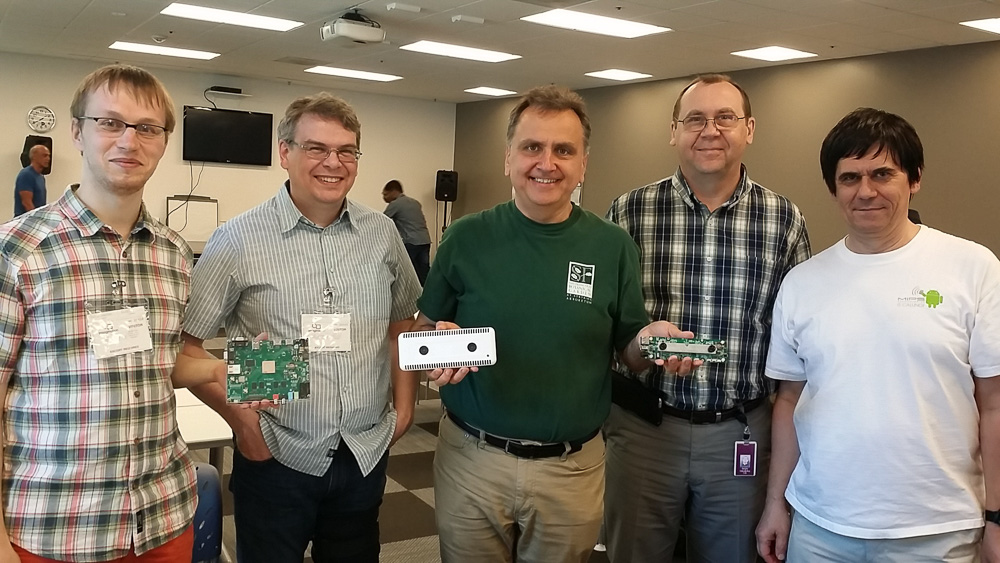
The Russian MIPS community has a direct impact on this step:
Today I spoke with MIPS President Art Swift. Prior to his current position, Art was Vice Chairman of the Marketing Committee of RISC-V, Vice President of Sun, DEC and Cirrus Logic. I asked Art about the difference between Open MIPS and the non-popular Open SPARC.
Art replied that Sun Microsystems was open only in words and did not like building a community very much. But we in Open MIPS will be engaged in building a community. Moreover, the methods of building a world community will be based on the experience of building a MIPS community in Russia (!), Or rather, working with Russian companies (ELVIS-NeoTek, Baikal Electronics, NIISI, NIIMA Progress) and universities that conducted seminars on MIPSfpga (MIET, MIPT, ITMO, MEPI, MSU, SSAU, NGTU, TSU, KPI and others).
A bit of history. The origins of MIPS are at Stanford in the early 1980s. In 1984, MIPS Computer Systems was founded, which later changed owners several times (Silicon Graphics, MIPS Technologies, Imagination Technologies, Wave Computing). In the same year 1984, the company ARM was founded. Here is MIPS founder John Hennessy with the first chip:
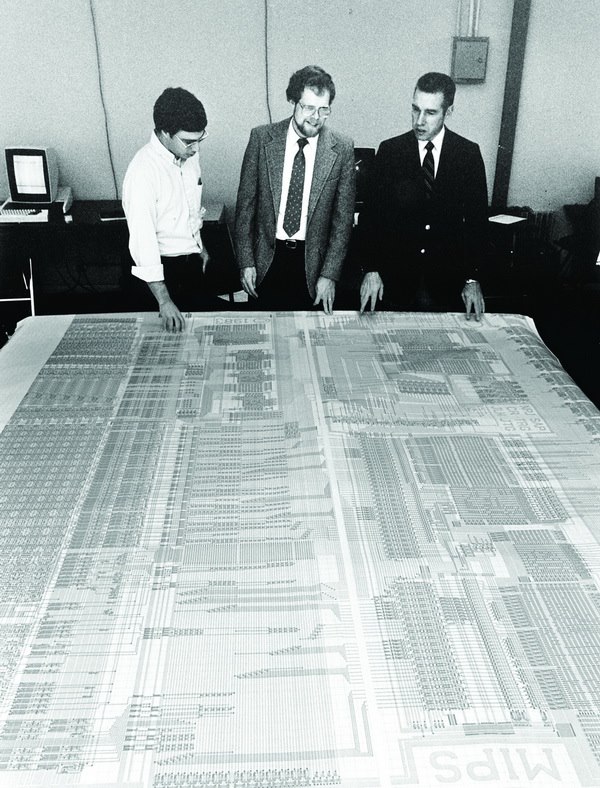
Later, MIPS was used in the early Nintendo64 and Sony Playstation game consoles. Here is the girl Irina in the computer museum next to the Silicon Graphics workstations, which were used to shoot the first realistic-graphic Hollywood films, including the Jurassic Park. The same computers are mentioned in the novel “Generation II” by the Russian writer Victor Pelevin. Inside - the MIPS R4000 processor:
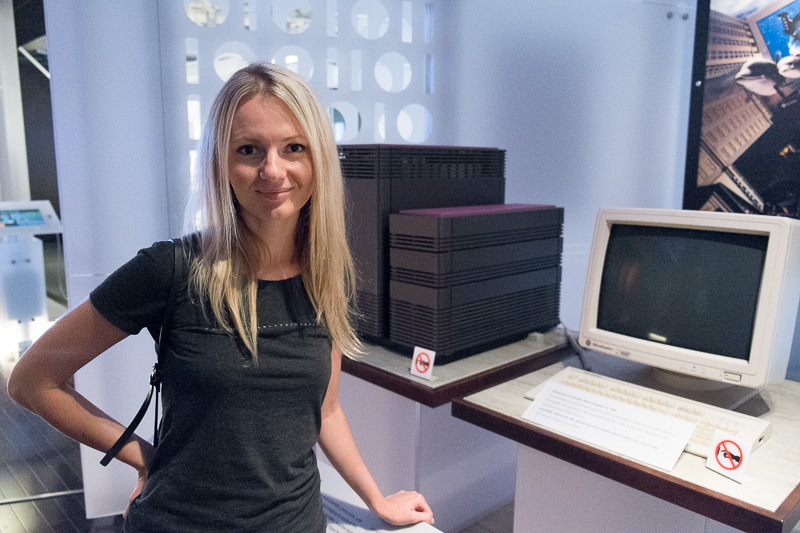
And here is a meeting last year in Moscow of participants of seminars on MIPSfpga, an educational program in which university researchers can modify the real industrial MIPS interAptiv UP processor, synthesize it for FPGAs and see how it works, including in the tact mode. In the center is Robert Owen, the manager of educational programs at Imagination Technologies, to his left is Stanislav Zhelio, the author of the Russian school kernel schoolMIPS (it can be found on GitHub):
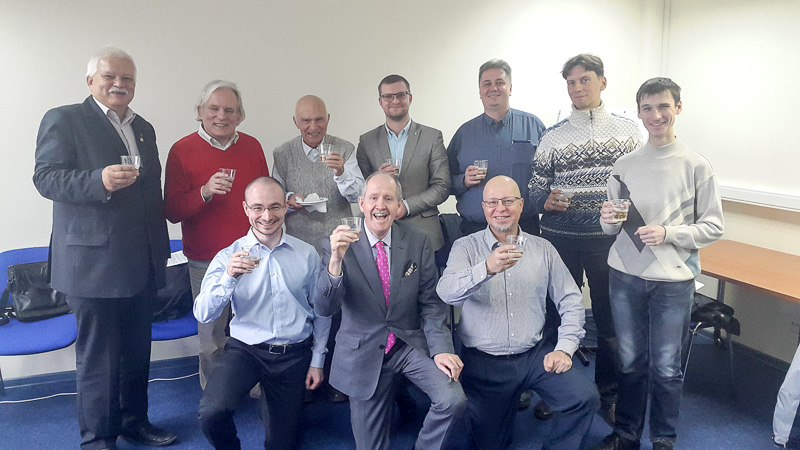
Here is a Russian computer based on the COMDIV-64 processor, with the MIPS + architecture option developed in Russia by microarchitecture + vector architecture extensions developed in Russia:
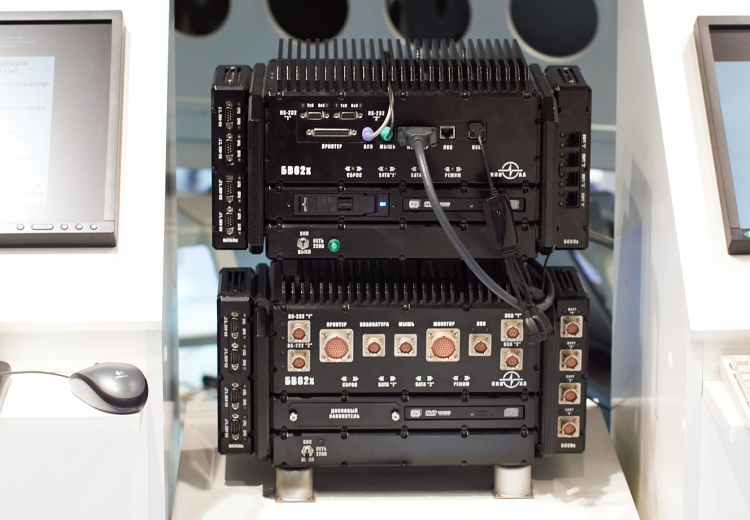
But Maxim Gorbunov, a manager from NIISI, where the COMDIV-64 was designed. Maxim is the second from the left, between a specialist in educational programs from Russian Samsung Tatiana Volkova and an education specialist from MIPT schoolchildren Andrei Ognev:
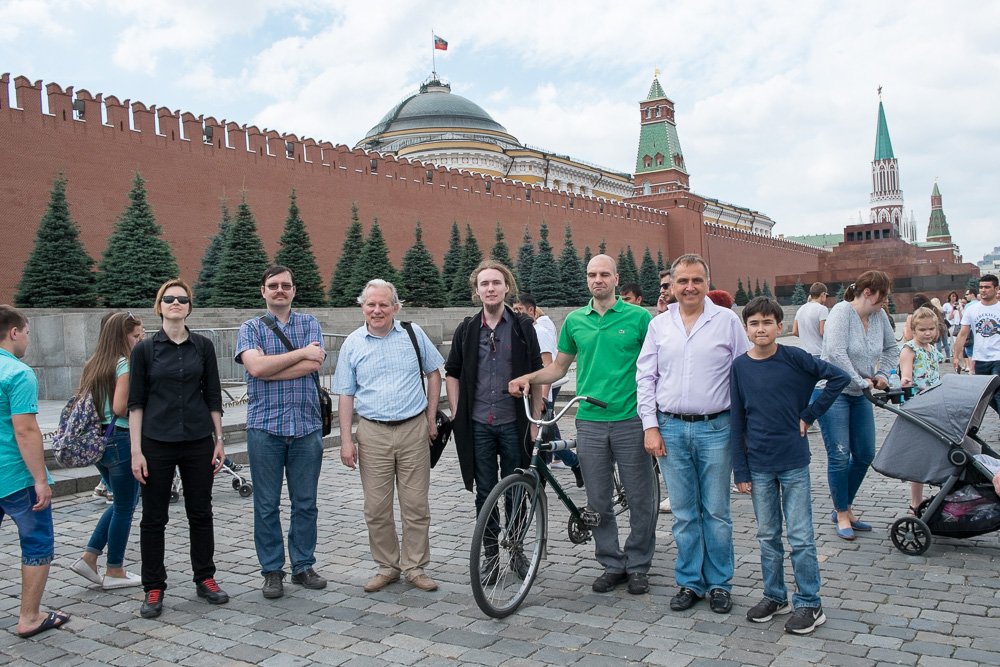
Here in the office of the licensee MIPS Baikal Electronics. The Baikal-T1 processor based on the MIPS P5600 "Apache" is now used in Russian machine controllers and network devices:
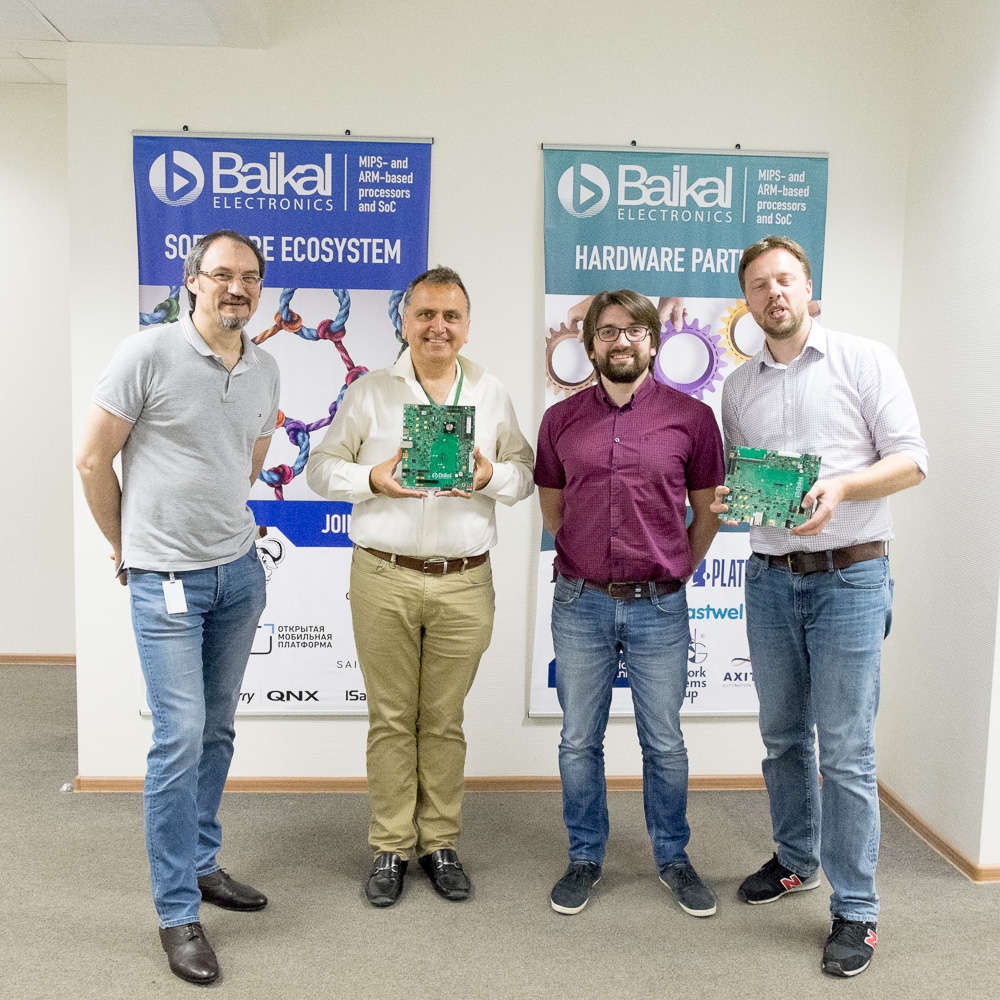
But at the Kiev Polytechnic Institute on the hackathon MIPSfpga. The winners of this hackathon subsequently received bronze at the European finals of the Innovate FPGA competition organized by Intel:

This hackathon was also included in presentations and articles about the practice of MIPSfpga in universities:
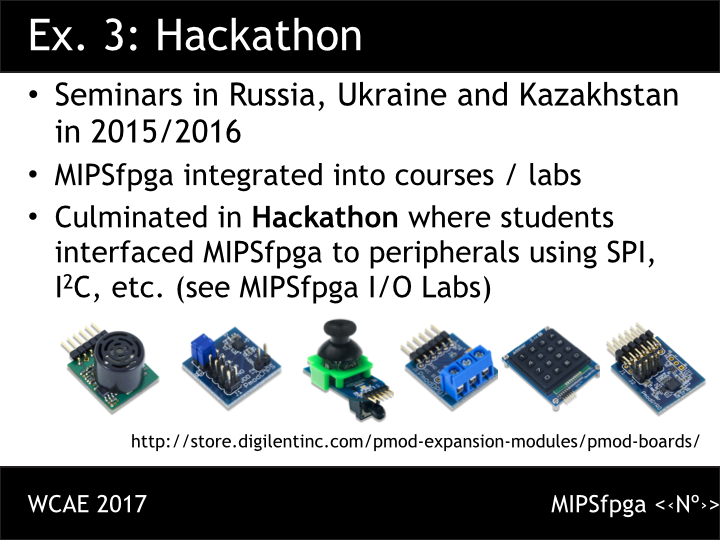
MIPS inspired the creators of specialized computing devices, such as David Wentzlaff, who teaches a course on advanced processor architecture in Princeton and Cursor:

The device, which was developed by David, represented a mesh of 64 processors. Interestingly, Wave Computing, the company of which MIPS is a part, is also working on the grid, but out of tens of thousands of processor elements. This architecture is designed for the neural network accelerator, a 7-nanometer chip, which Wave Computing is developing with Broadcom. Here at the Wave Computing office in Campbell, California. On the left is a functional verification specialist and UVM Jon Wang, and on the right is Senior Director for Custom Design Steve Dilbeck. Steve is a big authority on asynchronous design, dynamic logic and various effects at the level of transistors, when dimensions drop to 7 nanometers and frequencies rise above 6 gigahertz:

Here is a slide from the presentation on the neuro accelerator:
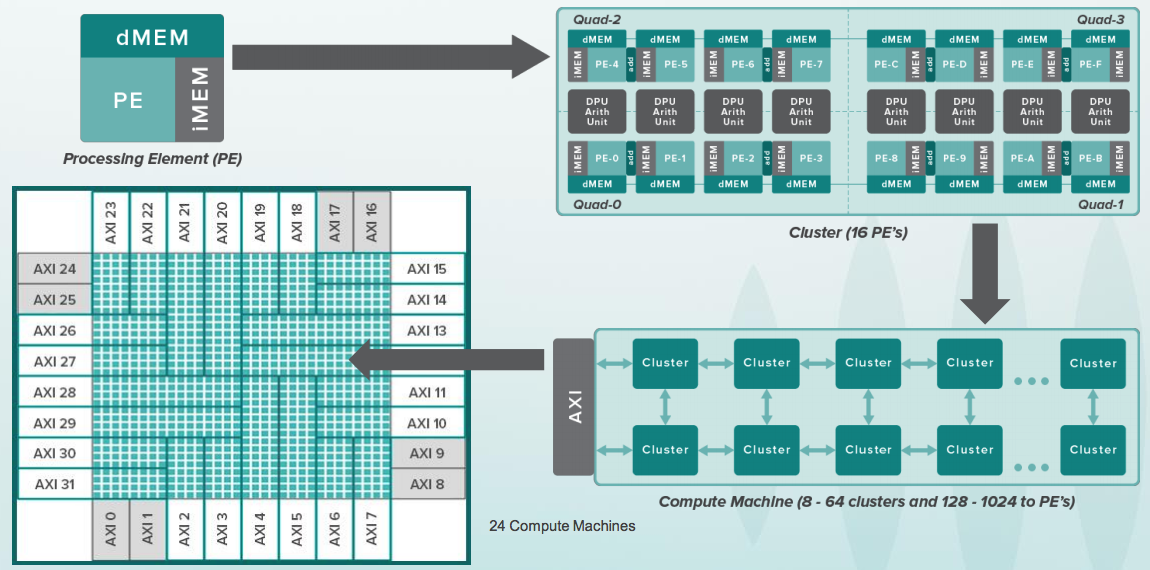
And here is a video (the first of four) from a two-hour lecture about MIPS and the Wave neuro accelerator at HSE MIEM :
Here is the 64-bit MIPS I6400 "Samurai" and MIPS I6500 "Daimyo" development team in San Francisco. This core was licensed in particular by the Japanese automotive electronics company DENSO, Toyota supplier:

')
But representatives of the Russian company ELVIS-NeoTek together with the Russian, Ukrainian and Kazakhstan developers of MIPS kernels and software for it. ELVIS-NeoTek is both the licensee of the MIPS cores, and the developer of the core microarchitecture that is compatible with the MIPS architecture. As well as video processing hardware blocks and recognition algorithms:

The Russian MIPS community has a direct impact on this step:
Today I spoke with MIPS President Art Swift. Prior to his current position, Art was Vice Chairman of the Marketing Committee of RISC-V, Vice President of Sun, DEC and Cirrus Logic. I asked Art about the difference between Open MIPS and the non-popular Open SPARC.
Art replied that Sun Microsystems was open only in words and did not like building a community very much. But we in Open MIPS will be engaged in building a community. Moreover, the methods of building a world community will be based on the experience of building a MIPS community in Russia (!), Or rather, working with Russian companies (ELVIS-NeoTek, Baikal Electronics, NIISI, NIIMA Progress) and universities that conducted seminars on MIPSfpga (MIET, MIPT, ITMO, MEPI, MSU, SSAU, NGTU, TSU, KPI and others).
A bit of history. The origins of MIPS are at Stanford in the early 1980s. In 1984, MIPS Computer Systems was founded, which later changed owners several times (Silicon Graphics, MIPS Technologies, Imagination Technologies, Wave Computing). In the same year 1984, the company ARM was founded. Here is MIPS founder John Hennessy with the first chip:

Later, MIPS was used in the early Nintendo64 and Sony Playstation game consoles. Here is the girl Irina in the computer museum next to the Silicon Graphics workstations, which were used to shoot the first realistic-graphic Hollywood films, including the Jurassic Park. The same computers are mentioned in the novel “Generation II” by the Russian writer Victor Pelevin. Inside - the MIPS R4000 processor:

And here is a meeting last year in Moscow of participants of seminars on MIPSfpga, an educational program in which university researchers can modify the real industrial MIPS interAptiv UP processor, synthesize it for FPGAs and see how it works, including in the tact mode. In the center is Robert Owen, the manager of educational programs at Imagination Technologies, to his left is Stanislav Zhelio, the author of the Russian school kernel schoolMIPS (it can be found on GitHub):

Here is a Russian computer based on the COMDIV-64 processor, with the MIPS + architecture option developed in Russia by microarchitecture + vector architecture extensions developed in Russia:

But Maxim Gorbunov, a manager from NIISI, where the COMDIV-64 was designed. Maxim is the second from the left, between a specialist in educational programs from Russian Samsung Tatiana Volkova and an education specialist from MIPT schoolchildren Andrei Ognev:

Here in the office of the licensee MIPS Baikal Electronics. The Baikal-T1 processor based on the MIPS P5600 "Apache" is now used in Russian machine controllers and network devices:

But at the Kiev Polytechnic Institute on the hackathon MIPSfpga. The winners of this hackathon subsequently received bronze at the European finals of the Innovate FPGA competition organized by Intel:

This hackathon was also included in presentations and articles about the practice of MIPSfpga in universities:

MIPS inspired the creators of specialized computing devices, such as David Wentzlaff, who teaches a course on advanced processor architecture in Princeton and Cursor:

The device, which was developed by David, represented a mesh of 64 processors. Interestingly, Wave Computing, the company of which MIPS is a part, is also working on the grid, but out of tens of thousands of processor elements. This architecture is designed for the neural network accelerator, a 7-nanometer chip, which Wave Computing is developing with Broadcom. Here at the Wave Computing office in Campbell, California. On the left is a functional verification specialist and UVM Jon Wang, and on the right is Senior Director for Custom Design Steve Dilbeck. Steve is a big authority on asynchronous design, dynamic logic and various effects at the level of transistors, when dimensions drop to 7 nanometers and frequencies rise above 6 gigahertz:

Here is a slide from the presentation on the neuro accelerator:

And here is a video (the first of four) from a two-hour lecture about MIPS and the Wave neuro accelerator at HSE MIEM :
Source: https://habr.com/ru/post/433524/
All Articles